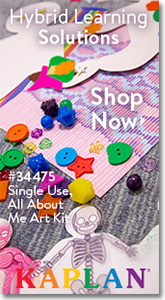ExchangeEveryDay Past Issues
 << Previous Issue
| View Past Issues | | Next Issue >>
<< Previous Issue
| View Past Issues | | Next Issue >> -E.E. Cummings
In a blog post Francis Wardle wrote for a Community Playthings, he quotes an article in The Denver Post that reported that just over 50% of students in grades 3-8 met reading and writing standards, and boys were significantly behind girls in every category.
Wardle then writes: “What’s this got to do with early childhood? School-age children are still not meeting expectations—especially boys. Everyone in the early childhood field is well aware of the downward push of academics into ECE curricula and instruction. Even early childhood standards, frameworks, and curricular approaches that claim to meet young children’s social and emotional needs are dominated by cognitive and literacy goals and objectives. Many are now also adding STEM to this list.
But this does not seem to be working! School-age children are still not meeting expectations—especially boys.
Interestingly, this same Denver Post article that reported the low literacy scores of boys compared to girls described an interesting approach to this dilemma used in one school: allow boys to select the content of the books they want to read. Further, one teacher in this school has resorted to writing her own books that she believes are more accessible to young boys than many traditional books found in early childhood programs and elementary schools.
This approach is an example of what I call a goodness-of-fit: a view that traditional reading materials in many early childhood programs and schools do not ‘fit’ the interests, learning styles, and aspirations of many young boys…
In my new book, Oh Boy: Strategies for Teaching Boys in Early Childhood…I explore this idea of goodness-of-fit for boys, not just in literacy, but in everything we do with young boys, age birth to 8 years of age…The statistics are very telling. Not only do young boys struggle with traditional academic proficiency, but more young boys are expelled and suspended than young girls; more young boys are placed in special education than girls—especially ADHD, specific learning disabilities, and emotional or behavioral disorders, and more boys than girls do not meet kindergarten entry requirements or are required to repeat kindergarten.
A major reason for these struggles by young boys is because the overall early childhood and elementary school approach currently used in the United States matches up better with the needs of young girls than those of young boys.”
Source: http://www.communityplaythings.com/resources/articles/2018/boys-and-the-need-for-goodness-of-fit
Strategies for Teaching Boys in Early Childhood to get 25% off this title for a limited time |
May not be combined with any other offer. |






Comments (2)
Displaying All 2 CommentsSomerville, MA public schools
Cambridge, MA, United States
Oh dear, I lost our exchange about transgender children. I am interested in writing an article, but I am still at the thinking it through place, and reading more books so that I can share that educator place as well.
You mentioned staff getting confused, perhaps disturbed by the pronouns. Here's a shot comic strip book that might be good to have around. It's short, and gives a good description of why pronouns matter, and how to navigate them when you are new to doing so. The book is called A Quick and Easy Guide to They/Them Pronouns by Archie Bongiovanni and Tristan Jimerson.
Liana
Seneca College
Toronto, ON, Canada
This is such an important message. Author Jon Sciezka was on to this long ago: http://www.jsworldwide.com/
His books are rich in silliness and satire, and are sophisticated and so engaging. They are favourites of many boys in my family and boys with whom I've worked, spurring them on to read more.
Post a Comment